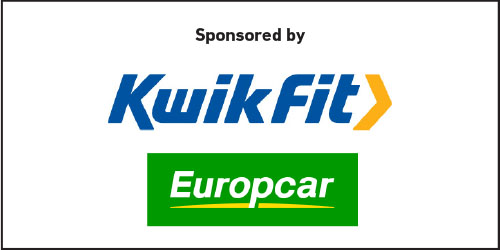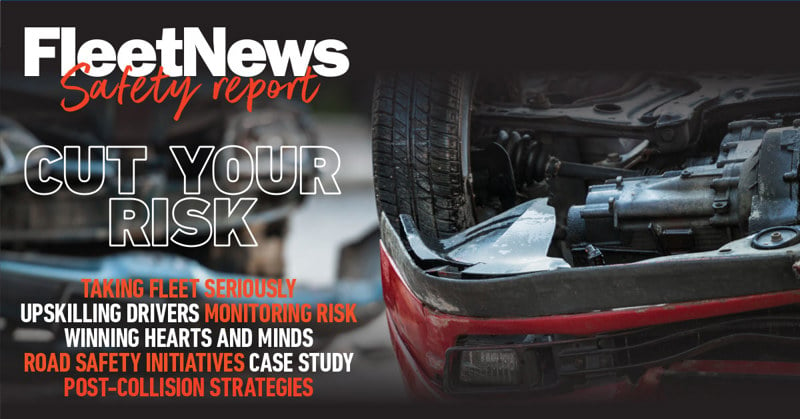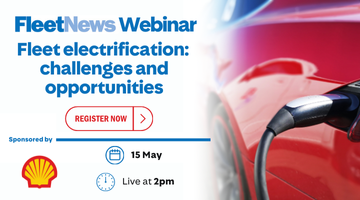This article has been taken from the latest Fleet News safety special report Cut Your Risk. It is sponsored by Europcar and Kwik Fit.

Telematics has become the go-to technology for a huge number of fleet decision-makers when it comes to improving driver behaviour.
It generates a large amount of data about how a vehicle is being driven which can be used to identify issues and areas of improvement as well as make operational gains such as increased efficiency.
But, this is now just the tip of the iceberg when it comes to the technology – it is evolving rapidly to provide much more than just post-driving analysis.
“Telematics isn’t just about identifying problems,” says Philip van der Wilt, vice-president for Europe, the Middle East and Africa (EMEA) at Samsara.
“With in-cab alerts and AI-enabled dashcams, it now intervenes in real-time to address issues such as distracted driving or driver fatigue.
“By detecting risks as they happen and delivering immediate feedback – such as alerts or warnings – telematics actively prevents dangerous behaviours from escalating into incidents and that makes the roads safer for everyone.”
Effective telematics
Traditionally, telematics has been used to measure metrics such as harsh braking, rapid acceleration, speeding and seatbelt use, and later using the information to gain the clearest possible understanding of where potential safety gaps exist.
“The key is turning the data into actionable insights,” says Geotab EMEA sales manager Oliver Holt.
“For example, identifying trends like frequent hard braking can indicate a need for driver training.
“By employing data to provide proactive coaching, fleets can create safer driving habits and reduce incidents.
“The data must serve as a guidepost for ongoing improvement.”
Real-time feedback – delivered to drivers through in-vehicle devices – can also empower them to self-correct immediately which reinforces safer driving habits, says Beverley Wise, Webfleet regional director for Bridgestone Mobility Solutions.
“Performance benchmarks can be set and progress tracked over time – and this approach fosters long-term behavioural change and creates a culture of safety,” she adds.
“Enhanced safety standards contribute to fewer accidents, lower repair costs and reduced insurance premiums, illustrating the symbiotic relationship between safety and cost management.
“Ultimately, telematics platforms allow fleets to transition from reactive to proactive risk manage ment, ensuring that driver safety is an integral part of wider health and safety strategies.”
The experts agree that communication is key when it comes to implementing any remedial action identified by telematics data.
Telematics reports can be used to illustrate specific areas for improvement and frame subsequent conversations around mutual benefits, while consistently highlighting how safer driving protects both the driver and the business.
“It’s about giving drivers visibility of the information and making them aware of where improvements can be made,” says Vernon Bonser, UK sales director at Queclink Wireless Solutions.
“Let them see how they are performing, backed by the data, and then benchmark this against their peers.”
Many fleets choose to follow up these conversations with tailored training – such as one-on-one coaching sessions or e-learning modules – in addition to positive reinforcement measures such as gamification or rewards for improved performance.
Integrated cameras and AI
Integrated camera systems can provide fleet managers with invaluable insights into driver behaviour and road risks.
By pairing video footage with telematics data, cameras can identify risky behaviours such as distracted driving, harsh braking or fatigue, while real-time alerts can encourage drivers to selfcorrect before an incident occurs.
The potential to help improve safety is clear.
“Cameras, particularly those integrated with telematics systems, provide essential context that raw data alone cannot, capturing the ‘why’ behind incidents,” says Holt.
“For example, an event flagged as harsh braking might have been caused by a pedestrian stepping into the road, something a camera can confirm.
“Cameras also enable real-time feedback, such as alerts for distracted driving or following too closely, allowing drivers to correct behaviours immediately.”
Sam Footer, partnership director at SureCam, stressed the mounting importance of these intelligent dashcams – which are frequently powered by artificial intelligence – as a tool for managing risk.
“There are a growing number of intelligent dashcams that can not only capture footage, but also engage directly with drivers regarding distraction and fatigue, detect nearby vulnerable road users and understand fleet risk like never before,” adds Footer.
“Organisations can now identify risk-generating events behind the wheel and automatically prompt the driver to change their behaviour with real-time voice instructions.
“If the driver doesn’t correct their behaviour, event alerts with video are then sent back to base to ensure coaching and training is focused and relevant to the drivers.
“This approach means the fleet manager isn’t inundated with too many alerts.”
JJX Logistics uses telematics and dual-facing dashcams to monitor the vehicle and driver while on the road. When the AI-powered camera detects a pre-determined safety violation, the footage is sent to JJX Logistic’s operations team, which reviews the incident and sends digital coaching alerts to the driver prior to them starting their next shift.
When a driver shows a particular underlying problem with their driving standards, they are brought in for an awareness briefing and coaching session with the operations team, with video footage used in certain scenarios where required.
When initiating remedial action based on camera footage, it’s crucial to approach the conversation constructively, says Wise.
“Begin by sharing the footage with the driver to establish transparency and mutual understanding,” she adds.
“Discuss the specific behaviours observed and explain the potential risks or consequences.
“Collaborate on a plan for improvement, which could include targeted coaching or adjustments to work schedules to address fatigue.”
Chris Horbowyj, commercial director of Targa UK, stresses the need for a focused approach to any training that is subsequently provided.
“In some cases, sharing videos or images of specific incidents can be enough to raise awareness about the impact of unsafe behaviours, while coaching sessions help address these behavioural gaps and discuss preventive strategies,” he adds.
“Progress should be tracked and milestones celebrated to reinforce adherence to safety practices and foster long-term improvement.”
Steve Thomas, managing director of Ctrack UK, says an increasing number of vehicle operators are now looking to explore the full potential of video telematics.
“For example, by extending the recording time after the ignition is turned off, the cameras can monitor whether a vehicle is being loaded or unloaded safely, or whether the correct safety procedures are being followed,” he explains.
“We are seeing video telematics integrated with other apps, systems and tools, which is enabling fleets to gain greater levels of visibility, control and insight through added connectivity and seamless sharing of data.
“This now covers a growing range of solutions including lone worker protection, accident and risk management as well as driver training.”
And the camera technology companies are constantly innovating in a bid to give fleet managers even greater control and oversight.
For example, Blackout Technologies, which specialises in overcoming the dangers of smartphone distraction, has recently teamed up with SureCam to develop a dashcam equipped with mobile device blocking.
Mark Hadley, chief executive officer of Blackout Technologies, explains: “Our integrated solution eliminates the illegal use of messaging apps, social media platforms, streaming and internet browsing behind the wheel, which is believed to contribute to as many as 40% of vehicle collisions.”
Harnessing AI's potential
According to Samsara’s recent State of Connected Operations Report, nearly half (45%) of UK leaders are already leveraging AI, and 89% plan to increase their investments in it over the next year.
“In fleet management, AI-driven solutions are at the forefront of the transformation that’s happening,” says van der Wilt.
“This newly-launched suite of AI offerings provides fleets with actionable insights, empowering managers to make smarter, safer decisions with confidence.
“It’s now possible to seamlessly integrate AI-powered insights, recommendations and actions across platforms.
!By delivering tailored visualisations, coaching and training tools, organisations are being enabled to foster safer driving practices and elevate operational efficiency.”
The consensus is that the potential of AI-enabled dashcams is currently in its infancy.
AI-powered analysis – coupled with the increasing roll-out of the 5G mobile network – will enable the telematics system to utilise an ever-greater range of data and video sources.
Thomas explains: “Details such as points on a licence, speeding fines, completed training and driving experience could be considered alongside behaviour, incidents, near misses, fuel usage, speed limits, road type, driving time and weather conditions.
“By making sense of these numerous risk elements, fleets can create a more complete picture of driver performance, which leads to highly accurate risk scoring and supports enhanced gamification, incentivisation and engagement strategies.”
Bonser continues: “Continued advancements in edge-based computing – where the data processing takes place on the in-vehicle device – and AI algorithms will lead to enhanced decision-making capabilities and the provision of highly accurate real-time driver insight.
“With improved object detection, better understanding of driving scenarios and sophisticated behaviour analysis, driver communication and management are going to take a massive step forward.”
Communication and transparency are both key when it comes to addressing any driver – and union – concerns surrounding the introduction of new risk management technology.
Footer adds: “Driver concerns can be a challenge, especially if handled badly.
“Not everyone is supportive of change or greater use of technology, but the biggest pushback from drivers is normally around privacy issues and a belief that they are being watched all the time.”
Consequently, colleagues should be kept informed from the start about exactly what data is being collected and how it will be used.
It’s equally important to emphasise the role of telematics and camera systems in improving safety and operational efficiency.
“Usually, pushback is just down to a lack of understanding,” says Edward Martin, head of marketing and business growth at JJX Logistics.
“We make it clear that we’re not watching them – we haven’t got time to. That’s not what they are there for; they are there for the drivers’ safety.”
Sticking point
Union buy-in is traditionally a sticking point for many fleets looking to implement telematics and cameras, but Wheatley Group won them over with its determination to improve driver safety and desire to ensure staff are given high-quality, well-equipped vans with the latest safety technology.
“We re-wrote our safe driving handbook and sat down with the unions and our health and safety people to explain why we needed telematics and what we were going to use it for,” says Jenny Dolan, group fleet manager at Wheatley Group.
“The drivers had that peace of mind that the processes were in place.”
Anonymising data – whenever possible – and maintaining strict data security measures also go a long way when it comes to building trust.
“To address privacy concerns, prioritising data protection is fundamental.
“This includes measures such as blurring driver images and ensuring data is only accessible to authorised personnel,” says Horbowyj.
“Engaging drivers and unions early in the process is another important step, allowing their input to be considered and their concerns addressed.”
Horbowyj adds that the use of clear and legally-compliant policies on data collection, storage and usage also help build trust with the driver.
Van der Wilt says: “Highlighting dashcam tangible benefits is another way to foster driver support.”
“Sharing real-world examples of how dashcams have exonerated drivers or contributed to safer outcomes can demonstrate their value.
“And when drivers understand how these tools directly benefit them, they’re more likely to embrace the technology.”
Telematics and camera solutions offer a substantial return on investment by delivering tangible benefits across multiple areas.
In short, fewer incidents will result in reduced insurance premiums, legal costs and vehicle downtime.
Operationally, better route optimisation, fuel savings and predictive maintenance can lead to significant cost reductions.
“Fleets also see gains in driver retention by creating a safer, more supportive work environment,” explains Holt.
“Many fleets report seeing returns on investment within the first year, but the long-term benefits – such as lower risk, higher efficiency and improved reputation – are invaluable.”
'Safety-first' culture
Horbowyj concludes that compliance with regulatory standards and fostering a “safety-first” culture also strengthens a company’s reputation.
“The impact of these systems is clear: 80% of incidents stem from distracted driving, highlighting the need for proactive measures, while insurance claims increase by 50% in the absence of video safety solutions,” he says.
“Moreover, 84% of poor driving incidents negatively affect businesses, further reinforcing the financial, operational and reputational value of telematics and video integration.”
Safety continues to be among the top priorities for a fleet decision-maker, but it can be a complicated and time-consuming subject to navigate.
Our new Fleet Safety Report aims to simplify this with a focus on a number of key issues, beginning with the reasons – such as moral, legal, operational and financial – why it should be taken seriously.
Employing case studies and industry experts, we also look at how an organisation can ensure its drivers are given the necessary skills to reduce incidents through a robust training strategy, the use of telematics and in-cab cameras to monitor and reduce risk, and how a fleet manager can win buy-in from drivers for new initiatives.
Other topics we investigate are post-collision strategies - what a fleet manager and driver should do after an incident to minimise the likelihood of a similar crash happening again, as well as how to reduce costs and vehicle downtime – and national initiatives which will have a future impact on collision rates.
This includes measures as simple as not referring to crashes as ‘accidents’, as well as the expected publication of a national road safety strategy in the spring.
The report, sponsored by Kwik Fit and Europcar, also features a case study of how a serious road collision led to an engineering company introducing new technologies to improve fleet safety.




















Login to comment
Comments
No comments have been made yet.